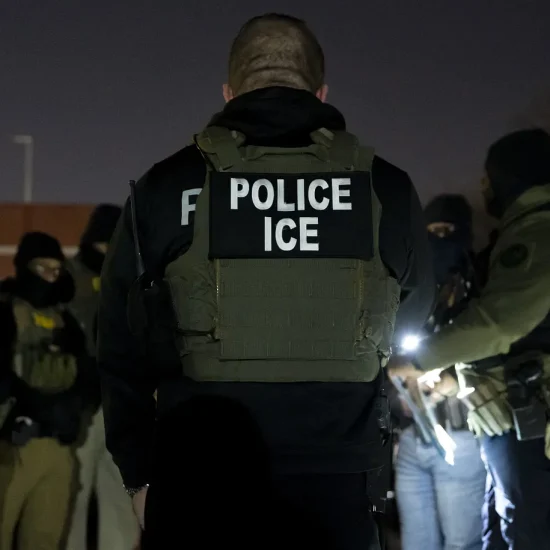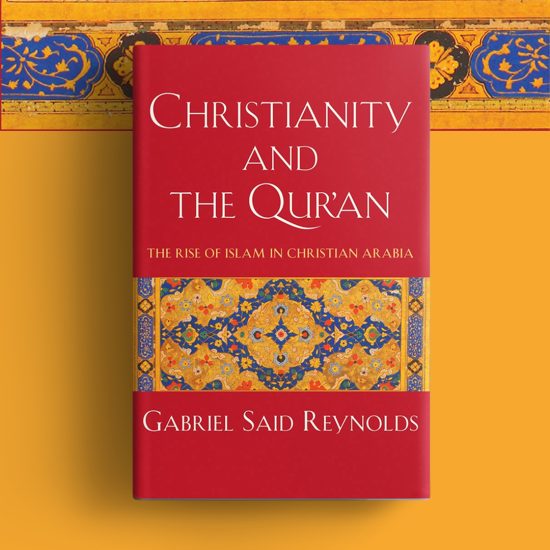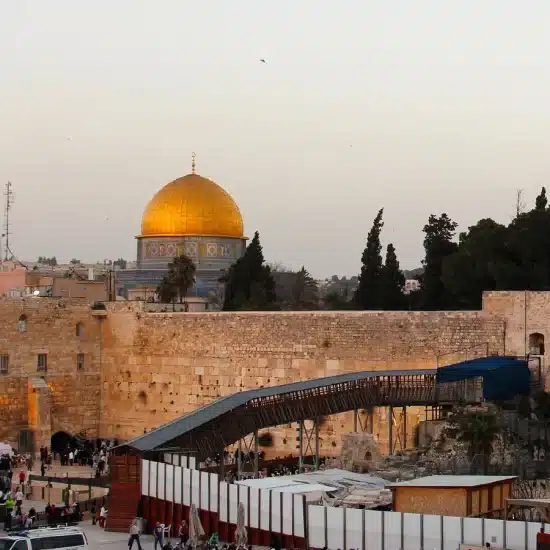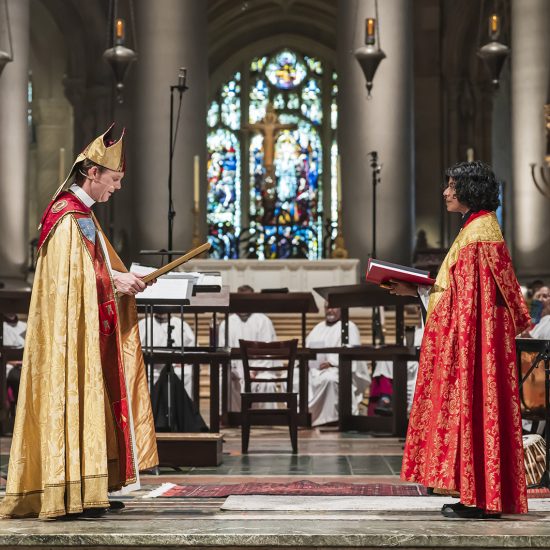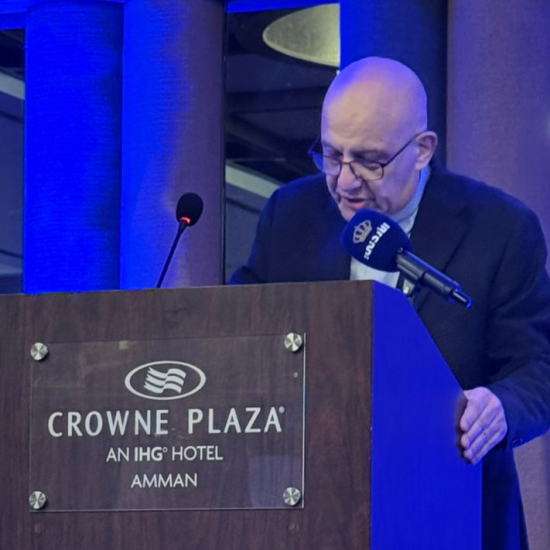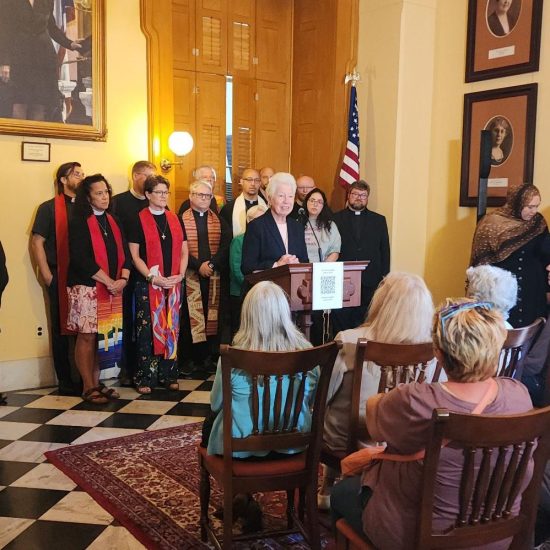PAICINES, Calif. (RNS) — Sometimes a tomato isn’t just a salad ingredient. Sometimes it’s a call to action.
That’s the revolutionary idea of about 40 farmers who gathered for a first-of-its-kind interfaith weekend at a working ranch in the rolling green hills 60 miles southeast of San Jose. Christians, Jews, Muslims and the spiritual-but-not-religious united to seek nothing less than a complete disruption of how food is grown, distributed and even served.
Their vision, laid out over three days of talks, communal meals and prayer, banished Big Ag and the factory farm. In their place, at the center of all that is grown, prepared and eaten, these farmers raised up the church, the synagogue and the mosque.
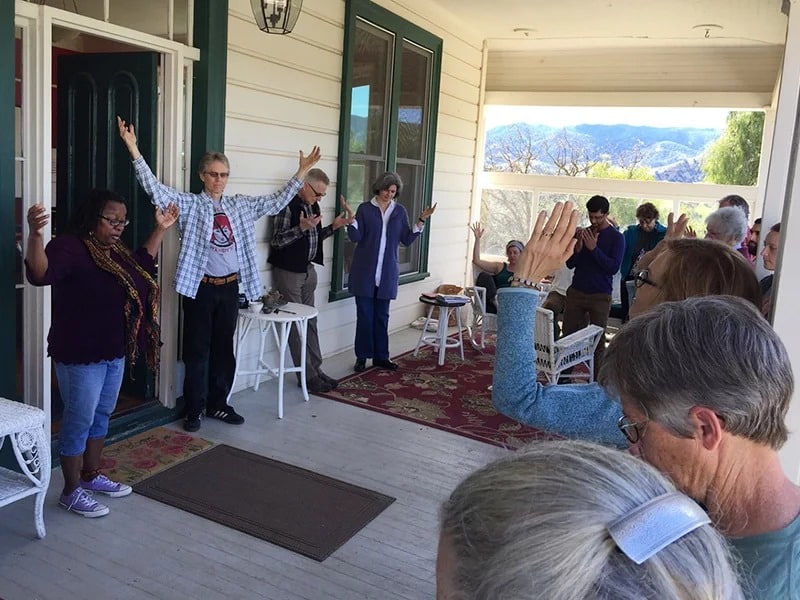 Venice Williams, left, leads Christian, Jewish and Muslim farmers in prayer at the FaithLands gathering on March 8, 2018, in Paicines, Calif. Williams is the founder of Alice’s Garden in Milwaukee, where she presides over a house church that grew out of the garden and its community. RNS photo by Kimberly WinstonFaith communities that once concerned themselves with soup kitchens and food pantries — stopgap measures for the poor — would focus on what these farmers call “food justice” and “food sovereignty” — empowering of all people, but especially the poor, underserved and marginalized, to grow and control their food.
Venice Williams, left, leads Christian, Jewish and Muslim farmers in prayer at the FaithLands gathering on March 8, 2018, in Paicines, Calif. Williams is the founder of Alice’s Garden in Milwaukee, where she presides over a house church that grew out of the garden and its community. RNS photo by Kimberly WinstonFaith communities that once concerned themselves with soup kitchens and food pantries — stopgap measures for the poor — would focus on what these farmers call “food justice” and “food sovereignty” — empowering of all people, but especially the poor, underserved and marginalized, to grow and control their food.
“We never ask questions when it comes to a handout model of food ministry,” said Venice Williams, a Lutheran lay minister who came to the conference from Milwaukee, where she is executive director of Alice’s Garden, an urban farm. “But when we begin to move into a self-sufficiency model, a model that acknowledges the talents and gifts of the communities we are called to journey with — not ‘serve,’ but ‘journey with’ — it gets more complicated, because that is more work.”
Jesus, she said, does not call his followers to what is easy.
“Jesus was a leader who was with the people, not distant from them. We are called to transform, to eliminate the injustice that we see. When we acknowledge that, then we have to look at this as an issue that every ministry should be engaged in because everybody has to eat.”
In other words, they want God’s people to get into the land business — to grow food and, along the way, nurture faith communities. What’s good for the table is also good for organized religion, they suggested, especially at a time when congregations face falling numbers, crumbling buildings and aging membership.
“As a pastor, the most important thing I want to instill in my people is not a fear of God but a sense of wonder,” said Sam Chamelin, a 35-year-old United Church of Christ pastor and farmer who sometimes leads worship in a Maryland barn. “I want us to say, ‘Who is this God that created all this beauty and diversity?’ If we can envision that, maybe we can find a different way of being believers.”
Another goal these farmers mentioned, more than once: to save the planet through the preservation of the land and the sustainability of local farming.
“Religion is really a response to the gift of life, and an ethical response to the gift of life is the stewarding of life,” said the Rev. Nurya Love Parish, co-founder of Plainsong Farm, which holds “Sabbath at the Farm” weekends, and an organizer of the event. “So in an age of ecological devastation, crisis, challenge, concern, religious communities are coming together for the health of creation.”
Faith in the land
The farmers at the gathering — they considered it too informal to call it a conference —came from around the country: church-owned farms, interfaith food cooperatives, intentional communities and religious orders with lands, faith-based community gardens and private farms guided by their owners’ personal faith.
Some distribute food through community-supported cooperatives, some grow food for lunches for underserved schoolchildren, some involve low-income residents in urban farms on rooftops, vacant lots and other gardens.
One farmer grows a strain of heritage wheat that is made into Communion bread.
The oldest attendee was a Catholic nun in her 80s with decades of experience in food justice; the youngest was a Protestant in his 20s who works his church’s few acres.
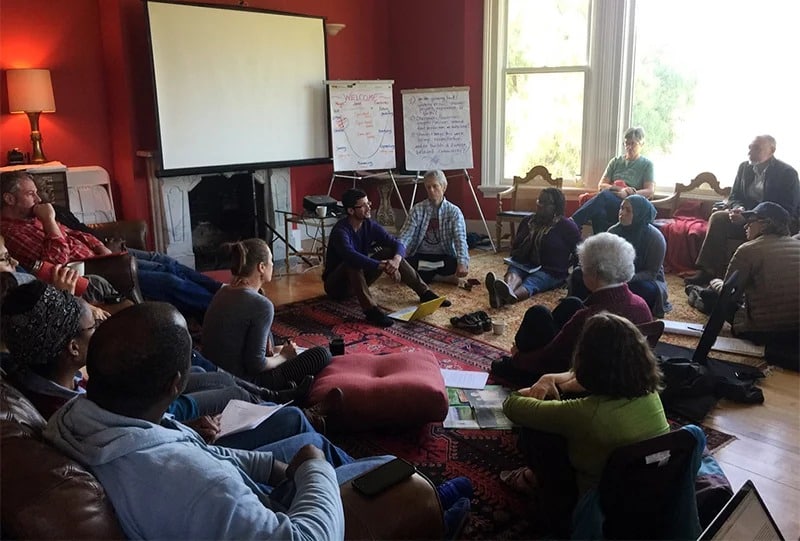 Moses Kashem, center, gets advice from his fellow faith-based farmers at the FaithLands gathering about 2 acres he farms for an Episcopal church in Miami. RNS photo by Kimberly WinstonFor three days, they met in a 100-year-old ranch house in the middle of Paicines Ranch, a working farm that raises sustainable, grass-fed beef and lamb and doubles as a conference center. The meals for this group were vegetarian and, of course, organic.
Moses Kashem, center, gets advice from his fellow faith-based farmers at the FaithLands gathering about 2 acres he farms for an Episcopal church in Miami. RNS photo by Kimberly WinstonFor three days, they met in a 100-year-old ranch house in the middle of Paicines Ranch, a working farm that raises sustainable, grass-fed beef and lamb and doubles as a conference center. The meals for this group were vegetarian and, of course, organic.
While the 40 or so farmers and others sprawled on well-worn sofas and chairs, sometimes taking notes on their laptops, a couple of lambs frolicked on the lawn as the wind spun a kinetic sculpture nearby.
Inside, the group shared best practices, solved each other’s problems and delved deeply into issues like honoring indigenous peoples displaced from the land they farmed. There were a handful of people from secular organizations who discussed practical things like the creation and management of land trusts.
None had ever been to a gathering like this before. Parish said that only recently has the number of farmers motivated by faith grown to the point where such a gathering is possible.
“In just our Christian food movement directory there are 300 people and resources – covering everything from seed banking to animal husbandry,” she said at the beginning of the meeting’s first full day. “The limiting factor of this gathering was the size of this room.”
And the name of their new gathering could double as a name for their farms and what they are now calling a movement — “FaithLands.”
Back to the future
FaithLands did not arise out of a vacuum. It came from a flood of small streams, some flowing back centuries: medieval monastery farms, the Catholic Worker movement, the 1960s “back-to-the-land” movement, where urbanites — some motivated by religious ideals — left cities for small, cooperative farms.
What is new about FaithLands is that there is now a critical mass of people and groups who see farming as a religious imperative.
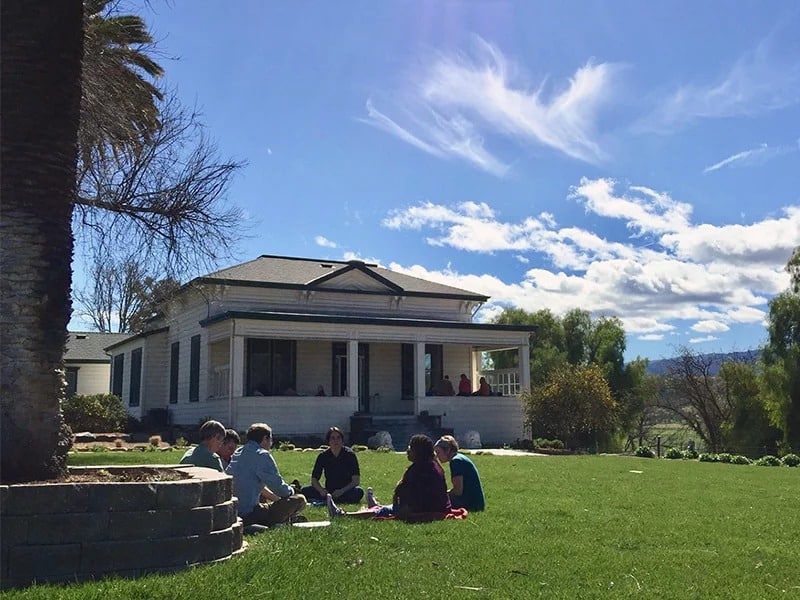 Christian, Jewish and Muslim farmers talk about “food sovereignty” as part of practicing social justice at the FaithLands gathering in Paicines, Calif., on March 8, 2018. RNS photo by Kimberly Winston“People ask me, is this a fad, are we just following society at large in terms of their interest in growing our own good, local food?” said Brian Sellers-Petersen, author of “Harvesting Abundance: Local Initiatives of Food and Faith” and a FaithLands participant. “And my response is, no, this is for real, this isn’t going away and there are some historic antecedents to it in the church. We are discovering each other and there is a lot that is being shared all of a sudden.”
Christian, Jewish and Muslim farmers talk about “food sovereignty” as part of practicing social justice at the FaithLands gathering in Paicines, Calif., on March 8, 2018. RNS photo by Kimberly Winston“People ask me, is this a fad, are we just following society at large in terms of their interest in growing our own good, local food?” said Brian Sellers-Petersen, author of “Harvesting Abundance: Local Initiatives of Food and Faith” and a FaithLands participant. “And my response is, no, this is for real, this isn’t going away and there are some historic antecedents to it in the church. We are discovering each other and there is a lot that is being shared all of a sudden.”
And there is a new urgency for faith-based farms.
“My suspicion is that there is a virus that is affecting both the church and our agricultural communities in the same way,” said Chamelin, who founded The Keep and Till, a Maryland faith-and-farming community that provides fresh tomatoes and other produce to two programs that feed the food-insecure.
“Both populations are struggling with aging populations, with production and profit mindsets that are rooted in the past century. They are struggling to communicate to the wider world who they are and why they exist and how to hand it off to the next generation. These are two things we can try to solve concurrently” through the establishment of faith-based farms.
There is theology across faiths that supports the establishment of such farms. The Christians and Jews at FaithLands pointed to the Bible — from the creation of a garden in the first pages of Genesis to Jesus’ institution of Communion at the Last Supper.
“Jesus left us a meal to remember him by,” Parish said. “That is what he left us and that meal illuminates all of our meals and helps us ask how does this connect us to God?”
Hisham Moharram, a Muslim, said his inspiration for the founding of his Good Tree Farm Project in New Jersey came from the Quran.
“Islam teaches us that the ground we walk on and everything we touch or impact on the day of judgment will either speak for you or against you,” he said. “We are taught you will not be able to hide anything you have done, the angels are reporting all the time, their batteries never go low. Likewise, the land we inhabit and use will either speak for you or against you, so it really does matter how we, Muslim or other, treat that most sacred of trusts out there.”
Rocky soil
The angels may be watching, but there are still challenges. Several attendees said that when they try to involve African-Americans in their farms there is often resistance.
“They see it as tied to the history of slavery in this country,” Moharram said. “We have to change the way we talk to some of our potential allies so we don’t push that button.”
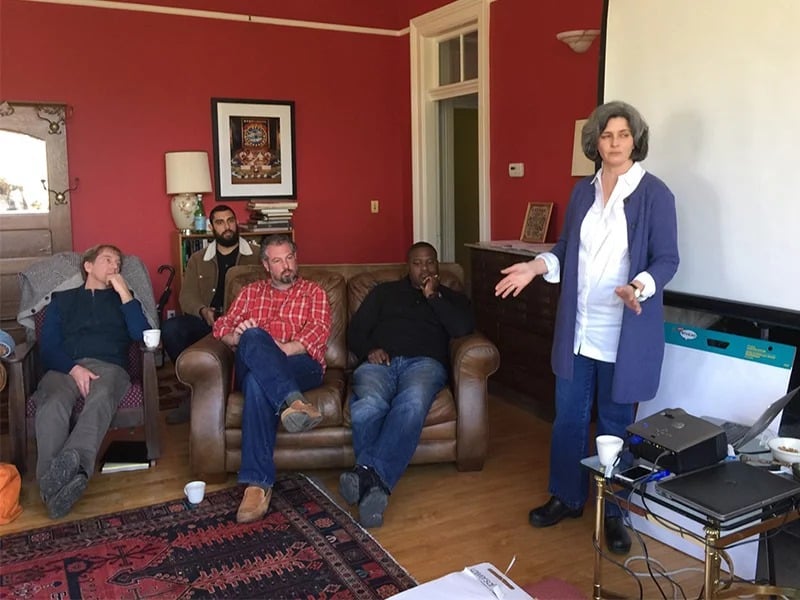 Williams said an awareness of slavery is ever-present at Alice’s Garden, where some local residents born to sharecropping parents remember picking cotton or eating home-grown squash because there was nothing else.
Williams said an awareness of slavery is ever-present at Alice’s Garden, where some local residents born to sharecropping parents remember picking cotton or eating home-grown squash because there was nothing else.
In an attempt to reframe the story of slavery and reclaim food traditions, she has dedicated a section of the garden to re-creating some of the farming techniques and foods that enslaved Africans brought to America.
“We are still unpacking and dismantling the many ways that the ‘unsettlers,’ as I call them, attempted to dismantle our humanity, and that is directly connected with the growing of food,” she said.
Others chimed in. A Methodist minister from the South said she received death threats after welcoming African-American farmers to her community garden, and a woman from a Jewish agriculture co-op in the Northeast said some Jews worry about anti-Semitism in rural areas.
There is also the difficulty of convincing religious institutions that they should give or lease their land for this kind of farming. Exact figures are scarce, but many churches are land-rich. The Church of Jesus Christ of Latter-day Saints owned more than $1 billion worth of U.S. real estate in 1991, and the Catholic Church, with an estimated 177 million acres, is the single largest landowner in the world.
Even small plots can bring big headaches. In an informal breakout session held on rocking chairs and wicker furniture on the ranch house’s shady front porch, Moses Kashem, the youngest attendee, sought advice on a disagreement between him and leaders at his Florida church. The church allows him to farm 2 acres of valuable real estate it owns, for which it receives a portion of the profits.
“How can I make them feel involved, to make them know I am not just a young farmer who comes to the church just so he can farm?” Kashem asked.
The answers, considered and thoughtful, ranged from the practical — get a contract to farm the land — to the more ephemeral.
“I think you have to ask yourself what have you done for the church to make them feel spiritually invested in your farm,” one man said.
Planting the next crop
At the close of the weekend, many of the pie-in-the-sky goals had become concrete plans of action.
Kashem returned to Florida with a template for a contract to formally lease land from his church; Williams headed to Milwaukee with plans to connect monthly with other African-American participants; and the wheat farmer planned to share her methods and seeds with other farmers.
“I am still sorting through all the things I learned and heard,” Amirah AbuLughod, a Muslim who farms with Jews and Christians, said a few weeks after returning to Stony Point Center, a farm and interfaith community in upstate New York. “To be in a space where people were coming from different backgrounds but were able to have common ground around the land — I feel very blessed to have been asked to come and be in that space.”

